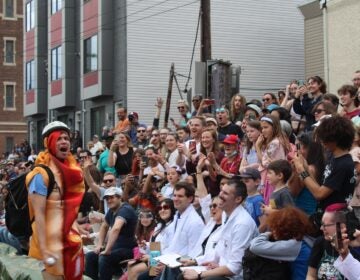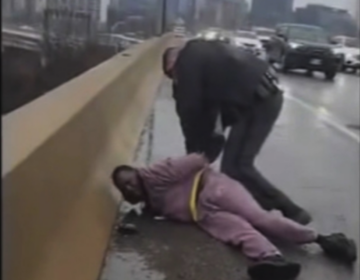Why is Philadelphia paying power bills for some lucky non-profits?
In North Philadelphia, residents of the privately owned Jefferson Manor Townhouses enjoy a shared quad with an impeccably maintained lawn, parking spaces and a few alleys.
You wouldn’t think taxpayers would foot the bill for this shared area’s electricity. But, as it turns out, they do.
Thanks to a hookup put in place decades ago by former Mayor Wilson Goode Sr., the city pays about $4,000 each year for those utility costs.
There are other deals like this. In fact, Philadelphia spends about $4.4 million annually paying the utility bills of nonprofits such as the Jefferson Manor Homeowners Association.
Large institutions, such as the Mann Center, and little-known groups, such as the Northeast Philadelphia Swim Coaches, are beneficiaries of the hookups. A tennis club that charges membership fees also gets it. So does a gun club.
To be clear, not all nonprofits in the city get this luxury — just more than 50 lucky institutions. There is no policy guiding which nonprofits get free utilities and which don’t.
Homeowners didn’t want to pay, city stepped in
The city has been picking up the Jefferson Manor check since 1988, when Goode signed a bill transferring the shared areas to the city.
Paula Taylor Peebles, then-president of the Jefferson Manor Community Development Corporation, says the city began paying the utilities simply because homeowners didn’t want to.
“They did not want the responsibility of maintaining the payment of electricity, of paving the parking lots, of upkeep of the landscape and grassy area, et cetera et cetera,” she says.
Peebles says the late Sam Evans, a political kingmaker, fought for the hookup.
Goode, for his part, says he doesn’t remember the details of those negotiations.
Often, current officials don’t know why these deals were made, either. Many were put in place decades ago by long-gone administrations.
Critics question whether the city can afford to keep paying these bills. The utilities for the Philadelphia Museum of Art’s buildings alone cost taxpayers about $3.4 million each year.
A question of priorities
“If I think about $4 million, how many police officers, firefighters could that put on the street?” says Laura Otten of La Salle University’s Nonprofit Center. “There are plenty of people in the city of Philadelphia who can’t pay their own utility bills. Why isn’t the city putting that money into helping individual residents pay their utility bills?”
Otten, who says raising money for utilities is one of the hardest tasks for a nonprofit , said these breaks could give an unfair advantage to those with connections.
Brett Mandel, a former candidate for city controller, says there is little rhyme or reason to which nonprofits get the break. For instance, most nonprofits that get it are leasing city-owned buildings at no cost. But at the same time, there are lots of nonprofits with city leases that don’t get their utilities covered.
Mandel worries that, without a policy, politically connected nonprofits could get the hookup, regardless of merit.
Nonprofits contribute in other ways
But Mark Focht, first deputy commissioner of Parks & Recreation, defends many of the breaks. He argues that, in several cases, the city is paying for utilities because nonprofits are spending quite a bit to maintain city buildings they’re leasing.
“For example, the Boys & Girls Club up in Tacony Creek Park, they’ve made a quarter-million dollars in capital improvements into a city-owned building,” he says. “They’re never going to get that money back.”
Focht points out that the Philadelphia Museum of Art also raises private funds to maintain the city-owned buildings, which it leases for free. The city not only pays for the museum’s utilities, but also gives it more than $2 million annually for security and upkeep costs, and more for capital projects.
Art Museum president Gail Harrity says the city is making a wise economic investment by footing its utility bills.
“In independent financial studies, it has been recorded that the museum’s economic impact on the city is vast,” she says. “On average, for every dollar invested or spent in the museum, there’s a $4 return in revenue for the city of Philadelphia.”
Last year, Mayor Michael Nutter created a task force headed by former mayoral candidate Tom Knox, which is charged with examining city facilities and leases. One of its goals is to come up with a policy governing the breaks for nonprofits.
Recommendations due next year
Knox says it’s too early to know what the policy will be. But he says he’ll be looking closely at the decades-old deals.
Zack Stalberg, president of the government watchdog Committee of Seventy, says Nutter should adopt a written policy guiding the breaks. Otherwise, he argues, taxpayers won’t be protected.
“I know it’s hard to believe, in Philadelphia, that there would be cronyism and favoritism and special deals,” he says. “But that’s what tends to happen when you don’t have a very clear policy.”
Ultimately, it will be up to Nutter to decide whether to accept Knox’s recommendations, which are due next year.
WHYY is your source for fact-based, in-depth journalism and information. As a nonprofit organization, we rely on financial support from readers like you. Please give today.




